I have the following query:
SELECT CASE GROUPING_ID(status, CASE WHEN status IN (2, 4, 5) THEN 1 ELSE 0 END)
WHEN 0
THEN TO_CHAR(status)
WHEN 2
THEN 'subtotal'
ELSE 'total'
END AS status,
COUNT(CASE user_type WHEN 1 THEN 1 END) AS "1",
COUNT(CASE user_type WHEN 2 THEN 1 END) AS "2",
COUNT(CASE user_type WHEN 3 THEN 1 END) AS "3",
COUNT(CASE user_type WHEN 5 THEN 1 END) AS "5",
COUNT(*) AS total
FROM (Select STATUS,USER_TYPE
FROM TRANSACTIONS tr join TRANSACTION_STATUS_CODES sc on sc.id = tr.user_type join
TRANSACTION_USER_TYPES ut on ut.id=tr.user_type
WHERE tr.status!=1 AND Tr.Update_Date BETWEEN TO_DATE('2022-01-01 00:00:00', 'yyyy-mm-dd HH24:MI:SS') AND TO_DATE('2022-11-13 23:59:59', 'yyyy-mm-dd HH24:MI:SS'))
GROUP BY CUBE(status,CASE WHEN status IN (2, 4, 5) THEN 1 ELSE 0 END)
HAVING GROUPING_ID(status, CASE WHEN status IN (2, 4, 5) THEN 1 ELSE 0 END) IN (0, 3)
OR ( GROUPING_ID(status, CASE WHEN status IN (2, 4, 5) THEN 1 ELSE 0 END) = 2
AND CASE WHEN status IN (2, 4, 5) THEN 1 ELSE 0 END = 1 );
which displays:
[
with inner query giving ( thats 10 out of 36rows):
anyways.. I've been asked to change the inner query to a better organized one, so I came up with the following pivot table ( which I want it to be my new inner query ):
SELECT p.*
FROM (
SELECT user_type,
status
FROM transactions
WHERE status !=1
AND Update_Date >= DATE '2022-01-01'
AND Update_Date < DATE '2022-11-14'
) PIVOT (
COUNT(*)
FOR user_type IN (1,2,3,5)
) p
ORDER BY status asc;
which gives:
what I need to try and achieve is the sum of subtotal/total of rows aswell as total of column( as I have in the first table ), and when I try to make it an inner query the outer query doesnt recognize anything..
so basically to add these:
is that achievable without changing the entire query? or else, what is the best approach to achieve that?
thanks in advance!



